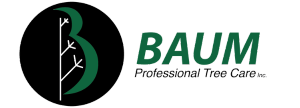Storm Damage Assessment and Restoration Services
When severe weather causes damage to trees, the damage can be minor affecting a few small branches or it can be major failures affecting many large branches or the entire tree.
Minor damage can usually be addressed with minimal pruning, while major damage may require a full restoration, entire crown reductions or even tree removal. It is important to address any broken branches to prevent a ‘domino effect’, where the holes in the crown created by broken branches result in a tree that is overexposed and at an increased risk of injury in a future storm.
Hiring a trained arborist to evaluate storm damaged trees is important for preventing further damage. Our team will assess your trees to determine whether they need to be removed, or if we can bring them back to health.
In all cases, our goal will be to restore the trees and ensure they stay healthy in the future — we will only recommend tree removals in worst case scenarios when they have been severely compromised.
Preventative Maintenance for Trees
Trees that are well maintained by an experienced arborist are often less likely to fail than trees that have un-addressed structural issues and defects.
Homeowners should consider that preventative maintenance for their trees can cost less in the long run as storm damaged tree removals often cost significantly more because of the uncontrolled way they failed, making them more hazardous and complicated to remove. Storm damaged tree removals often require special equipment like cranes to safely bring down.
The frequency of pruning for preventative maintenance depends on the tree, but it is generally required every three to five years. Having an experienced arborist caring for your trees can give them the best chance for the long term.
FAQ
Your first step is to have a Certified Arborist come in to assess the damage to determine if retaining the tree is feasible. We will address your questions and concerns and determine the best course of action for your tree. Trees that have suffered minor or moderate damage will be good candidates for pruning. Trees that have suffered major or catastrophic failures will likely require removal.
This depends on a number of different factors. If we have a high volume of calls from storm damage, we will try to triage those calls and respond to the most critical, high risk calls first. We address calls that have trees that are still at risk of doing further damage or that are currently, on buildings, utility wires, or vehicles first. If the tree is not currently a hazard we will schedule a visit to assess as soon as time allows.
It is natural to have concerns about your other trees after one has broken in a previous storm. If you are concerned it is a good idea to have a Certified Arborist come to assess the tree(s) in question. An Arborist will be able to identify any potential areas of weakness and can then discuss your options with you. Removing trees should be a last resort because of all of the benefits that trees provide for us. Often, mitigation techniques will be adequate in reducing the risk to you and your home.
Contact us for a quote for storm damaged trees today!

